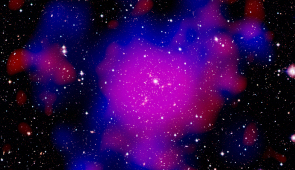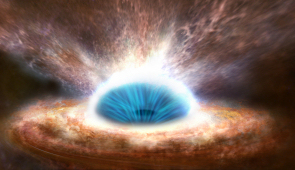Objectives
|
Note: Hitomi (formerly ASTRO-H) was a high-energy astrophysics space observatory, developed by the Japan Aerospace Exploration Agency (JAXA) in collaboration with institutions in Japan, the US, Canada, and Europe. It carried four instruments that together spanned the energy range 0.3-600 keV. The science goals of this mission included studying the dynamics of hot gas in galaxy clusters, the accretion of matter onto supermassive black holes at the cores of distant galaxies, and the acceleration of cosmic-ray particles up to very high energies. The mission was launched on 17 February 2016 at 08:45 UTC. On 28 April 2016, JAXA announced that they would discontinue operations of Hitomi as it was no longer possible to communicate with the satellite following an anomaly which appeared to have resulted in both solar array paddles having broken off from the spacecraft body. In June 2017, ESA announced that it will participate in Japan's X-ray Astronomy Recovery Mission (XARM), designed to recover the science of the Hitomi mission. |
While invisible to the naked eye and traditional (optical) telescopes, some of the most powerful objects in the Universe shine brightly in X-rays and gamma rays. Since this highly energetic light is absorbed by our planet's atmosphere, these observations must be carried out from space. The space age has opened up a vast new window on the cosmos and many groundbreaking discoveries have been made by studying the high-energy Universe.
The Hitomi mission (known as ASTRO-H prior to launch) follows in the footsteps of many great high-energy space observatories, including ESA's XMM-Newton and INTEGRAL, NASA's Chandra, Swift, NuSTAR and Fermi, and JAXA's ASCA and Suzaku satellites.
The main science goals of Hitomi are to measure the properties of hot gas, traced by X-ray and gamma ray emission, in a variety of cosmic objects, ranging from the vicinity of black holes to the remnants of supernova explosions and, on a grander scale, to galaxies and galaxy clusters.
With unprecedented energy and spectral resolution over a broad range of energies, Hitomi will uncover new details about the dynamics of hot gas across the Universe, allowing astronomers to set new constraints on the evolution of cosmic structures.
 |
 |
| Galaxy Cluster Abell 2744. Credit: ESA/XMM-Newton (X-rays); ESO/WFI (optical); NASA/ESA & CFHT (dark matter) |
Artist's impression of a black hole wind. Credit: ESA/ATG medialab |
In particular, Hitomi will:
- Reveal the abundance of elements present in the gas that pervades galaxy clusters, the largest structures in the Universe kept together by their mutual gravity. By determining the elemental abundance of the intra-cluster gas at different redshifts, astronomers will be able to study the evolution of galaxy clusters over cosmic time, yielding new constraints on the cosmological models and on their parameters.
- Obtain precise measurements of the motions of hot gas in galaxy clusters, to investigate the dynamical state of the gas and test the importance of turbulence in these systems. The new measurements could improve the estimate of how much dark matter is contained in galaxy clusters and how it is distributed, shedding new light on their evolution.
- Measure the velocity, density and ionisation state of the gas that is accreted onto supermassive black holes at the centre of active galaxies, as well as determining these properties for the winds and outflows of gas triggered by these powerful objects. This will allow astronomers to study the relation between accretion discs and outflowing winds in the vicinity of supermassive black holes, including the highly obscured ones that can only be accessed with hard X-ray observations, to better assess the role that these objects play in the formation and evolution of galaxies.
- Examine how matter moves in the close vicinity of black holes to study how space-time is distorted by the powerful gravitational attraction of these objects and compare the behaviour of matter under strong gravitational field conditions with the prediction of Albert Einstein's General Theory of Relativity.
- Probe different types of environments across the cosmos – remnants of stellar explosions, magnetised stars, galaxy clusters – where cosmic ray particles are accelerated to very high energies. These measurements will constrain the physical processes that give rise to these highly energetic particles.
Hitomi will operate as an observatory, collecting data for sources of X-rays and soft gamma rays. These objects range from stars to black holes, from pairs of stellar remnants to the centre of the Milky Way, from active galaxies to galaxy clusters.
In addition, the Soft Gamma-ray Detector on Hitomi is also sensitive to polarisation, providing the opportunity to study the polarised emission from high-energy sources. This will allow Hitomi to substantially extend the number and classes of sources from which polarised hard X-rays and soft gamma rays have been detected. Currently, such emission has been detected from the Crab Nebula and the black hole binary system Cyg X-1, and there are also indications of polarised emission from gamma-ray bursts.
